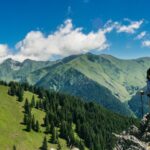How to Make a Campfire in Any Weather
When you’re out in nature, the crackle of a campfire can transform an ordinary evening into a magical experience. Whether you’re battling wind, rain, or snow, knowing how to build a campfire under any conditions can keep your spirits high and your campsite cozy. Here’s a comprehensive guide to help you create a reliable fire, regardless of the elements.
Choosing the Right Location
Start by selecting a suitable spot for your campfire. Look for a flat, dry area at least 10 feet away from tents, trees, and other flammable materials. If it’s windy, position your fire pit so that the wind blows away from your camp. In rain, find a sheltered area, like under a natural overhang or dense trees, to shield your fire from the worst of the downpour. Always check for any fire restrictions in the area before proceeding.
Gathering Materials
The success of your campfire lies in the materials you gather. You’ll need three types of fuel: tinder, kindling, and fuel wood.
Tinder includes small, easily ignitable materials like dry leaves, pine needles, or cotton balls soaked in petroleum jelly. In wet conditions, look for birch bark or dry grass hidden under larger rocks.
For kindling, gather small twigs and branches, ideally no thicker than your pinky finger. If it’s raining, collect kindling from the ground, or bring along some dry sticks stored in a waterproof bag.
For fuel wood, gather larger logs that are at least 1 inch in diameter. Make sure they are dry, as wet wood can smother flames. If possible, use seasoned wood, which burns better than fresh-cut logs.
Preparing the Fire Pit
Once you have gathered your materials, it’s time to prepare the fire pit. Clear a circular area about three feet in diameter, removing any debris or flammable vegetation. If the ground is wet, you can create a base using larger rocks or logs to elevate your firewood above the damp earth.
To establish a safe fire pit, consider using a metal fire ring or stones arranged in a circle. This will help contain the fire and prevent it from spreading.
Building the Fire
There are several techniques to build a fire that works well in various conditions. One effective method is the teepee structure. Start by placing a bundle of tinder in the center of your fire pit. Arrange kindling in a teepee shape around the tinder, leaving an opening for air circulation. Finally, lean larger fuel wood against the kindling to create a larger teepee.
If you’re in windy conditions, use a windbreak made from logs or rocks to shield the flames. In wet weather, keep the fire as compact as possible to retain heat and create a draft.
Lighting the Fire
To ignite your campfire, use waterproof matches or a lighter. If you’re using matches, shield them from the wind with your body while striking. Light the tinder in several places to ensure an even burn. If conditions are particularly damp, you might want to use fire starters like magnesium sticks or chemical fire starters designed for wet environments.
If the fire struggles to catch, don’t panic. Add more tinder and kindling, ensuring that air can circulate around the materials. Blow gently at the base of the fire to encourage flames.
Maintaining the Fire
Once your fire is lit, the next step is to maintain it. Add larger pieces of wood gradually to keep the fire burning. Be mindful of the wind and rain; if it starts to rain heavily, consider covering the fire with a tarp or setting up a makeshift shelter to protect the flames.
If you’re camping in cold conditions, keep a close eye on the fire to ensure it doesn’t go out. Adding wood before the flames die down will ensure you have a steady source of heat.
Creating a Safe Environment
After your campfire has served its purpose, it’s crucial to extinguish it safely. Pour water over the embers until they are cold. Stir the ashes to ensure everything is doused, and check for any remaining hot spots. Leave no trace behind; always respect nature and the environment you are in.
By following these guidelines, you can confidently enjoy a campfire in any weather. The warmth, light, and ambiance it provides can make your outdoor experience all the more memorable.


